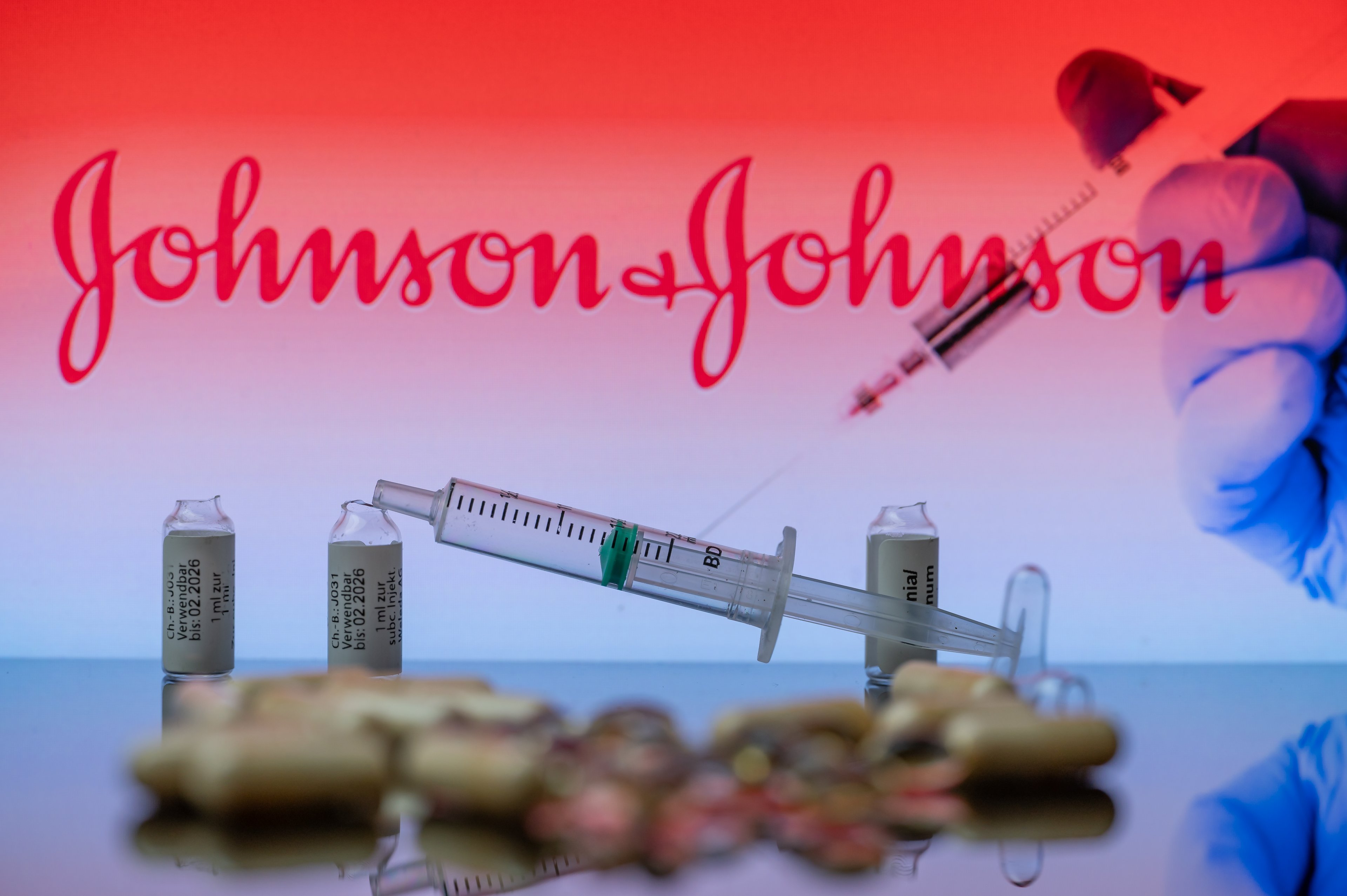
CEO Alex Gorksy. Source: Johnson & Johnson.
The spotlight was all Johnson & Johnson's (JNJ +0.19%) on Tuesday, with the healthcare conglomerate kicking off earnings season for the pharmaceutical sector by reporting its second-quarter results. Unfortunately for investors, Johnson & Johnson's report led to more of a whimper than a bang.
Johnson & Johnson's Q2, by the numbers
For the quarter, Johnson & Johnson, also known as J&J, reported a depressing 8.8% decline in total sales to $17.79 billion on EPS of $1.71. For comparative purposes, J&J's sales pretty much hit Wall Street's forecast right on the head, while its EPS squeezed in $0.02 above estimates.
Dig a bit deeper and the picture gets a bit brighter. Negative currency translation was a 7.9% drag against its total sales, meaning on an operational basis Johnson & Johnson's sales dipped just 0.9%. Back that out even further and remove the comparisons involving its divested businesses (Ortho-Clinical Diagnostics), and global sales actually increased a modest 1.7% on an operational basis. This is the apples-to-apples figure we actually care about when making our determination of how healthy J&J's business is.
Lastly, while J&J's top-line results may not have been pretty, the company did wind up boosting its full-year EPS guidance range from a prior forecast of $6.04-$6.19 to a new projection of $6.10-$6.20.
Johnson & Johnson answers three important questions
Headline figures are great to give you a scratch-the-surface sense of how a company did, but you have to be willing to look at the nuts and bolts of the company to figure out how the "machine" works. With that in mind, here are three important questions I believe J&J answered with its latest quarterly results.

Source: TaxRebate.org.uk via Flickr..
1. Currency issues are still ugly, but the company is growing
The big question investors have been wondering all along is whether J&J's core businesses were still growing. On the surface, currency exchange rates are making things look downright ugly, but beneath a sea of one-time acquisitions, divestitures, and currency translations, J&J is still the same steady growth story it's always been.
For instance, global consumer health product sales declined by 7%, but that was due to a 9.3% decline caused by currency conversion. Although 2.3% operational growth in consumer sales might seem modest, it implies that J&J's pricing power in this segment remains strong.
Pharmaceuticals were another (modest) operational bright spot for J&J, with apples-to-apples growth of 1% after accounting for currency fluctuations. Sales would have actually been much higher had J&J's hepatitis C drug Olysio not been displaced in recent quarters by more convenient options, such as Gilead Sciences' Harvoni and Sovaldi. The 93% tumble in domestic Olysio sales for the comparative quarter ($725 million to just $50 million) wiped out nearly 10% operational growth throughout the remainder of J&J's domestic pharmaceutical operations. Bright spots included 17% operational growth in its oncology segment and a 24% operational jump in cardiovascular/metabolism therapy sales.
With the U.S. dollar's ascent stabilizing this past quarter, it's possible the worst of the currency-masking effect could be over for J&J.

Source: Johnson & Johnson via Facebook.
2. Medical devices, on the other hand, are still weaker than expected
On the flipside, while J&J's pharmaceutical and consumer health products operations are motoring ahead, the company's medical device segment continues to disappoint.
Total sales for the second quarter totaled $6.4 billion, a 12.2% decline from the prior year. As you might have guessed, currency fluctuations played a role in that decline, but domestic sales (which aren't affected by currency fluctuations) fell 5.8%. Once again, keep in mind that divestitures and acquisitions also affect these figures. When these non-apples-to-apples costs and benefits are excluded, total medical devices sales increased by 1.4%.
But don't let that global increase fool you; J&J is facing some serious growth challenges in medical devices. Within the United States, the implementation of Obamacare and the uncertainties surrounding costs associated with the healthcare reform law for consumers, hospitals, and physicians may be causing patients and providers to hold off on elective surgical procedures until there is more clarity. In foreign markets competition is heating up, making it more difficult for J&J to differentiate its devices from those of its peers. Although medical devices are a long-tail growth driver for J&J, it's getting plainly obvious that investors (and Wall Street) are growing impatient waiting for a growth reacceleration.
3. Imbruvica and Invokana fears appear to be overblown
Two of my chief concerns heading into Johnson & Johnson's Q2 earnings report were the sales figures for type 2 diabetes drug Invokana and blood cancer drug Imbruvica. Both therapies have blockbuster potential for J&J, but each raised a yellow flag in recent months.

Source: Johnson & Johnson.
For instance, Imbruvica's domestic sales in the first quarter grew by a meager 3% in the U.S. from the sequential fourth quarter, with practically all of its growth stemming from overseas markets. That was a bit disconcerting, considering its lofty peak sales potential of $5 billion-plus. With regard to SGLT-2 inhibitor Invokana, an update from the Food and Drug Administration in May that SGLT-2 inhibitors may lead to a side effect known as ketoacidosis (high levels of blood acids) worried me that Invokana sales could drop off in Q2 or beyond.
However, Johnson & Johnson's Q2 results suggest that both drugs remain on track for success.
Invokana delivered $318 million in Q2 sales, a 14% sequential quarterly improvement which places the drug on an extrapolated trajectory for $1.3 billion in annual sales. Ketoacidosis concerns aside, SGLT-2 inhibitors' side effect of inducing weight loss in type 2 diabetes patients makes it a potentially favorable drug class moving forward. Translation: There's very little to worry about with Invokana.
Imbruvica's sales also soared domestically and internationally. Within the U.S., Imbruvica sales grew by 35% from the sequential first quarter to $89 million, while sales sextupled in the international markets on a year-over-year basis to $65 million. Based on my best guess, Imbruvica has a shot at meeting or surpassing $650 million in full-year sales in 2015.
Sizing up J&J
In all, Johnson & Johnson delivered another respectable quarter. As per the norm, J&J's pharmaceutical segment continues to carry the company, while medical devices holds the promise of long-term success as access to medical care grows within the United States and abroad. With 31 consecutive years of adjusted EPS increases under its belt and a ridiculous 53-year streak of boosting its annual dividend, it doesn't look as if J&J is anywhere near giving up its spot as one of healthcare's safest long-term investments. If you're looking for a quality dividend-income play that isn't going to disrupt your sleep at night, I'd suggest taking a closer look at Johnson & Johnson.






